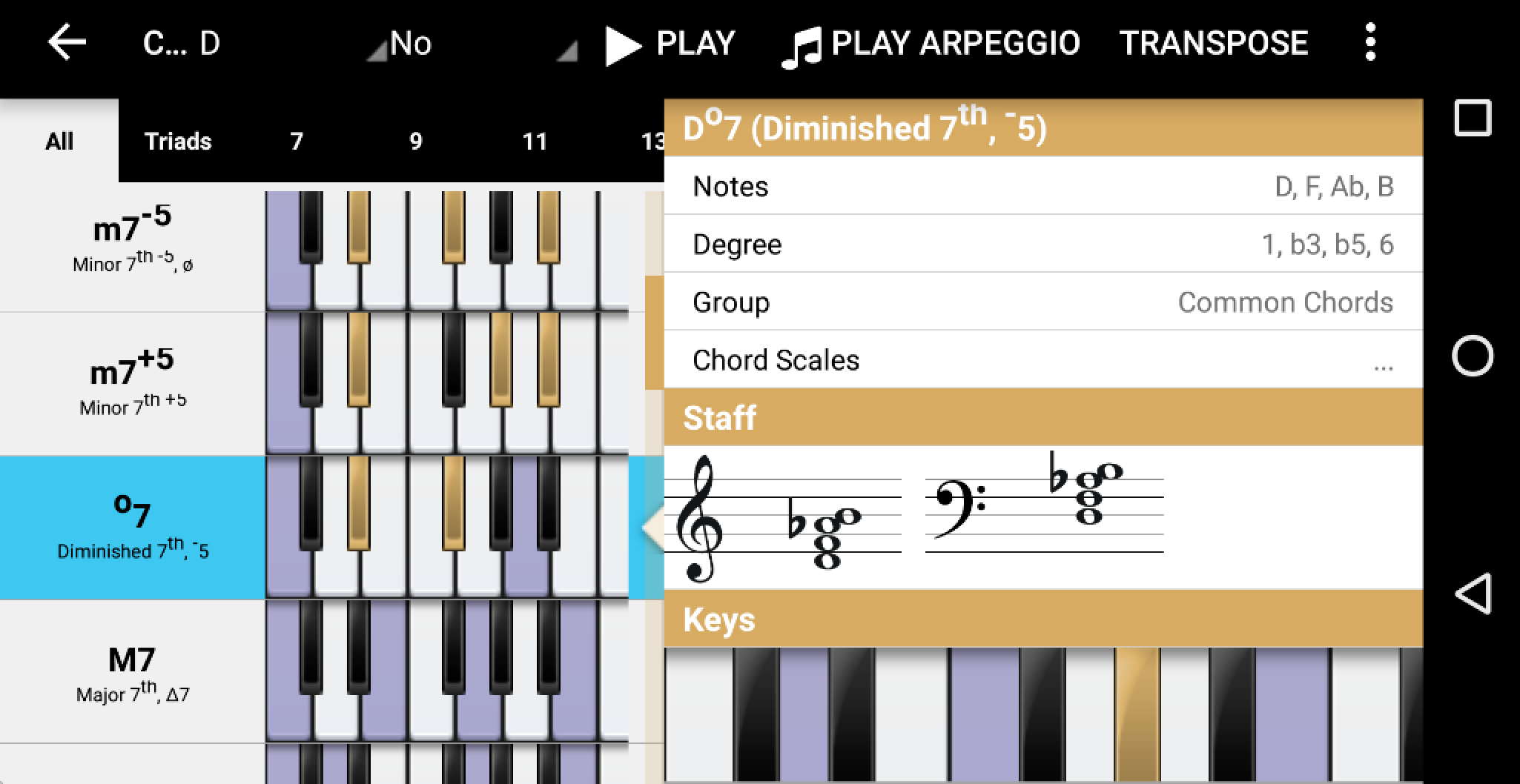
Chord detection for Piano, Guitar and Banjo in all positions and inversions. Over 3,500 chords recognized, from the simplest to the most complex works with open tunings! Don't be afraid to retune your instruments because you won't be able to find the positions of all your chords quickly.Īlso enjoy a piano-guitar interface to efficiently exchange between guitarists and pianists on original or complex chords.
#REVERSE CHORD DICTIONARY PIANO FULL#
In the full version, the application proposes to extend this intelligent and interactive chord dictionary system to more exotic instruments (7-string guitar, Ukulele, mandolin, banjo, violin.), offers to bookmarks your favorite chords in order to work them later and above all. Listen to them, play them, modify them directly on the application and make the best choice for your compositions or interpretations! Thanks to a powerful algorithm, the application is not limited to known positions and offers many more suggestions than the classic chord dictionaries. Also choose a chord from the dictionary to see all the positions that can be played on the guitar or banjo. Press the keys on the piano or the frets on the guitar, and the application will recognize the chord and indicate its most appropriate notation. If you don't know a chord on a score, if you're looking for the best notation for a composition, or if you're looking for an original position for a chord on the guitar (or on another stringed instrument), then Chord Analyzer is for you.Ĭhord Analyzer provides a bridge between stringed instruments (guitar, banjo, mandolin, ukulele, etc.), the piano and American chord notation. Substantial overhaul to how preview chords are triggered, now able to control octave, velocity, and duration.Chord Analyzer is an interactive, reverse chord finder. Changelogġ.1.3: Fix for chord velocities always triggering at full volume instead of using MIDI velocityġ.1.2: Improved direct chord triggering, MIDI can now be abutted or overlapping (Only most recent Note On will trigger chord)ġ.1.1: Fix for mislabeled Dominant 7 degree in direct lookups (notes were correct, but it was called Major 7)

The 7th degree can also be flatted, opening up the option for dominant chords and other interesting chords. From this table you can select which you would like to see visualized on the keyboard display, and even add extension notes up to the 13th to add color to your progression. Index will show you a table of 7 diatonic chords that will sound great together based off the notes of that scale. First, set the device to any key, and choose one of the many scale tonalities. If you’re looking to quickly and intuitively build a progression from scratch, or just learn to play in a new key, this is the feature for you. Feedback is greatly encouraged if any chords are found to be missing or incorrect, and will be dealt with swiftly. This a feature that took many months of development and fine tuning to get right.

The following chords and their inversions are supported: This is a powerful feature for building chords by ear, learning inversions and extensions, and quickly jamming with fellow musicians. It displays the resulting root and full chord name as well as commonly used shorthand, while also showing the chord across the keyboard visualizer. Index can detect all intervals and every common chord consisting of up to 7 notes as quickly as you can play them, including their inversions. For the first time ever in Reason, simply play MIDI into Index and you’ll instantly get the name of the chord you’re playing.


 0 kommentar(er)
0 kommentar(er)
